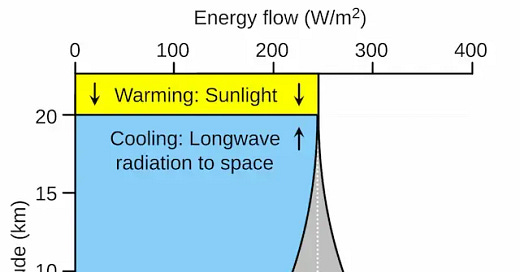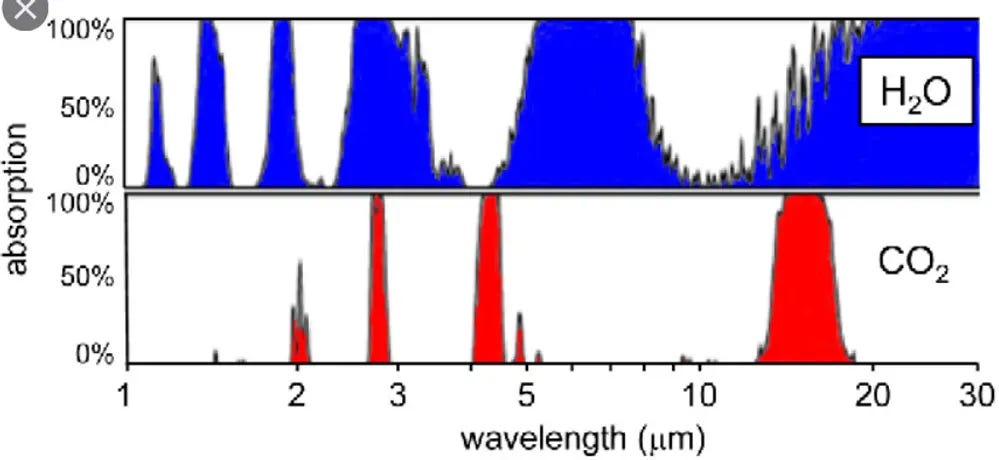Climate Change and Ways to Combat Global Warming, Part 3
In the previous parts we learned what is causing global warming and the major contributors to CO2 emissions.
Where does the 'extra' CO2 end up?
The earth has 3 main CO2 sinks.
30% is absorbed by our oceans. It turns into an acid which is bad news for shellfish and corals. It causes their shells to dissolve.
30% is absorbed by plants on land. They convert it into energy and oxygen through photosynthesis. Because it's their fuel scientists were hopeful increased concentration of CO2 would stimulate faster plant growth, referred to as the CO2 fertilization effect (CFE). But according to a 2020 study the opposite is true. Increased atmospheric CO2 is making plants less effective at photosynthesis.
The rest, 40%, ends up in the atmosphere where it powers the greenhouse effect.
A short history of the Greenhouse effect
Just like it makes banana farming possible in Sweden, it makes life on earth possible by increasing the temperature at sea level 33°C. The idea was proposed by Joseph Fourier in 1824 and later proved by Eunice Newton Foote in 1856.
In 1896 Svante Arrhenius proposed fossil fuels will warm the planet. His claim was quickly 'disproven' by an experiment and it has been plagued by confusion ever since.
Two common misunderstandings of the theory.
Adding atmospheric CO2 cannot block more radiation.
Abundant water vapor in the atmosphere blocks all Infrared light.
Let's look at each of them in turn.
Adding atmospheric CO2 cannot block more radiation
It was tested experimentally in 1900 using a gas tube with different concentrations of CO2. The CO2 impact on radiation transmission was minimal.
However, this treated the atmosphere as one homogenous layer rather than a series of layers with different concentrations and thicknesses. Additional CO2 works as a blanket on top, with each layer making it harder for light to radiate off the earth. It’s the CO2 concentrations at the top layers, not the bottom near the earth’s surface, that drive global warming.
Water vapor is the main element blocking IR light
Water vapor can make up as much as 3% of the air volume, whereas CO2 at 420 ppmv only makes up a mere 0.04%. Water vapor also absorbs a broad spectrum of light at sea level.
However, military aviation research in the 1940s discovered that water vapor have gaps in its absorption frequencies, which are covered by CO2 and at high layers the atmosphere is very dry.
In contrast CO2 is particularly good at absorbing thermal infrared radiation above 13 micrometers and its concentration is mixed throughout the atmosphere making it more important at higher atmospheric levels where water vapor concentration is low.
How does the Greenhouse effect work
It's all about wavelengths.
The sun hits the earth with shortwave radiation, e.g. visible light, due to its high surface temperature of 5500°C. 29%, bounces off our atmosphere. 23% is absorbed by the atmosphere. The remaining 48% is absorbed by the earth’s surface. Earth has a lower temperature so it emits longwave (IR) radiation. It is cooled by evaporation, 25%, convection, 5% and the infrared radiation 18%. 12% passes through the atmosphere but 6% is captured by greenhouse gasses and is returned to the earth.
This heating effect varies by altitude. At sea level it raises the temperature from 33°C to an average of 15°C. Another way to see it is through heating power. Earth’s surface generates radiation at an average rate of 398W / m2 but only 239 W/ m2 reaches space. The difference of 159 W / m2 is the energy that returns through the greenhouse effect.
In the final part we’ll look at 4 promising technologies to remove our access CO2 through reforestation, biochar, enhanced weathering, direct air capture and storage. If you can’t wait check out the original post here.
I hope you enjoyed my article! If you want more subscribe to recevie my free bi-weekly newsletter with analysis of experiments and research on complex topics like sustainability, climate, education, AI, entrepreneurship, and more. Every Tuesday and Thursday.





